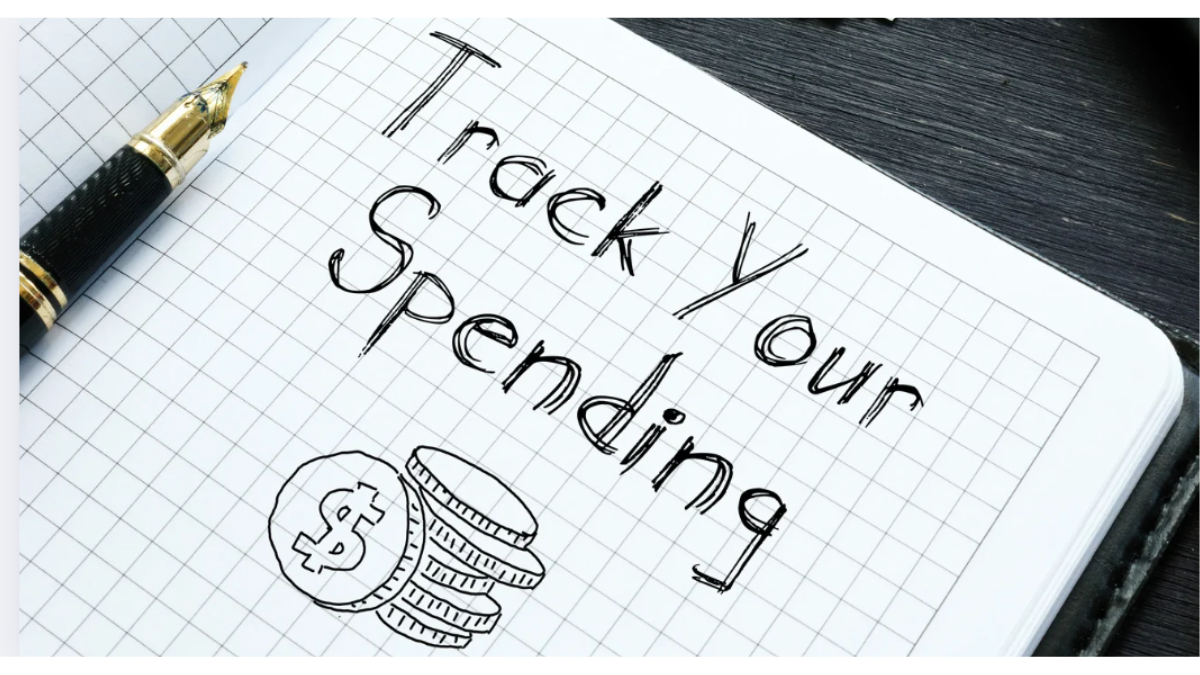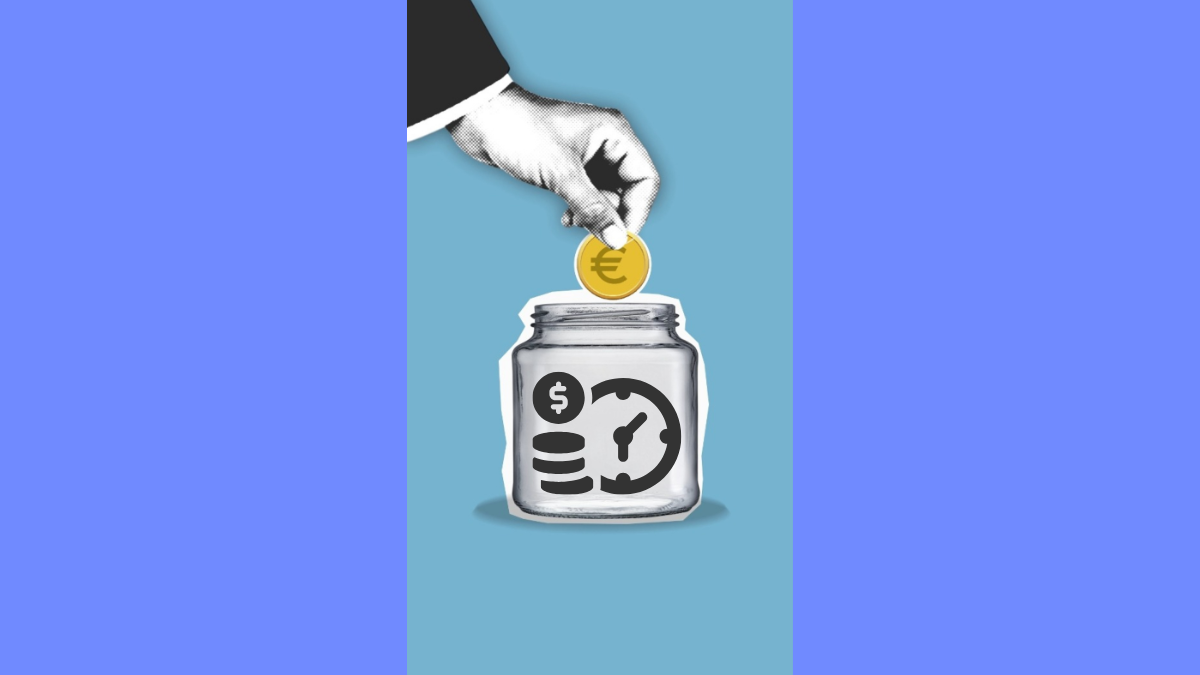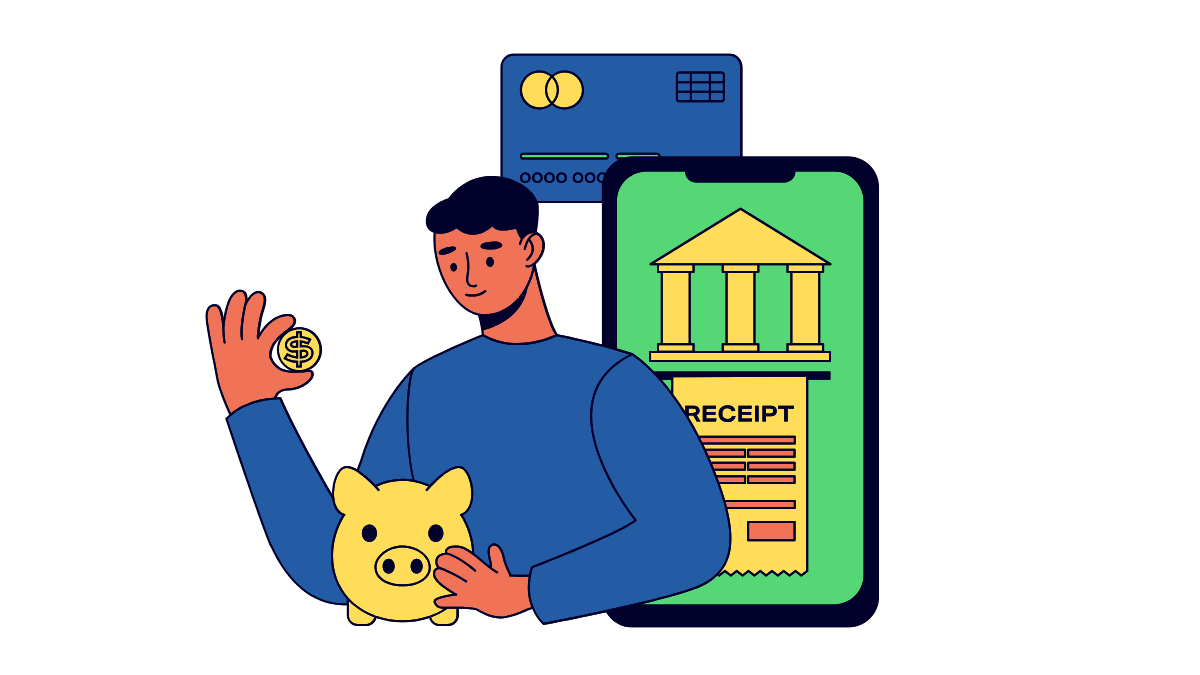Why Monthly Budget Reviews Matter
Creating a budget is an important first step—but sticking to it and making it work long-term requires ongoing attention. That’s where a monthly budget review comes in. It’s not just about spotting mistakes or overspending; it’s about understanding how your money is flowing and making informed adjustments that align with your goals.
The Value of a Monthly Check-In
Think of your budget as a living system—not a static document. Your income might change, your expenses fluctuate, and your priorities shift over time. A monthly review helps you:
- Catch problems early before they snowball (like rising subscriptions or unexpected fees).
- Track progress on financial goals such as paying off debt, building savings, or investing.
- Adjust spending to reflect your current reality—not last month’s assumptions.
- Build awareness of your money habits, so you’re not managing blindly.
- Spot patterns in your spending habits (both good and bad).
- Identify waste—subscriptions, services, or habits draining your money.
- Reevaluate goals as your life evolves (e.g., planning for a move, saving for a trip, or adjusting to a new job).
- Regain control if the month didn’t go as planned—without shame or guilt.
The Hidden Overspend
Let’s say you created a budget at the start of the year, allocating $400/month for groceries. By month three, you realize you’re averaging $520/month. That’s a $120/month gap—or $1,440 a year. A monthly review helps you catch this and either trim spending or reallocate funds from another category to stay balanced.
Treat Your Budget Like a Business Would
Businesses run monthly financial reviews to assess performance and make data-driven decisions. You should do the same for your personal finances. This builds financial discipline and ensures your money is being used intentionally—not emotionally.
Think Like a CFO (Chief Fanancial Officer)Big companies don’t manage their money based on vibes—they rely on regular financial reviews to guide decisions. Your household should be no different.
- Monthly review = financial accountability.
- Adjustments = strategic planning, not failure.
- Clarity = less stress, more confidence.
The Best Time to Do Your Review
Timing your monthly budget review is just as important as doing it. Choose the right moment, and it becomes a quick, focused habit. Choose the wrong one, and it turns into a chore you keep pushing off.

When Should You Review Your Budget?
The best time to review your budget is at the end of each month—ideally just before the next month begins. This gives you the full picture of what happened and allows you to prepare for what’s coming.
Here’s a simple monthly cycle:
- Last 2–3 days of the month → Close out your budget.
- 1st of the month (or payday) → Start fresh with adjustments made.
How Long Should It Take?
Once you get into the rhythm, your monthly budget review should take 20 to 30 minutes max. Think of it as a quick check-in, not an all-day project.
Break it down like this:
- 1. 5–10 mins – Review actual income and expenses.
- 2. 5–10 mins – Spot trends, surprises, or mistakes.
- 3. 5–10 mins – Adjust categories and update next month’s plan.
Why Timing Creates Consistency
Habits form when you do the same thing at the same time, in the same way. That’s why anchoring your budget review to a specific day (like the last Sunday of the month) helps you build consistency—and avoids procrastination.
If you delay your review by just a few days, you risk:
- Forgetting what you spent money on
- Overlapping into the next month and missing a clear reset
- Losing momentum on financial goals
Real-World Example: Sunday Budget Ritual
Some people set aside the last Sunday evening of every month to review their budget, update their financial goals, and plan the next month. They light a candle, grab a coffee, and make it a focused, calming ritual—like journaling or meal prepping.
The key is not just when you do it, but how regularly. Consistency leads to clarity.
What to Look for in Your Budget
A monthly budget review isn’t just a numbers exercise — it’s a decision-making tool. By reviewing your budget line by line, you gain clarity about what’s working, what’s not, and what needs to change. The goal is to align your spending with your values and long-term goals, not just to “stay under budget.”
What to Review in Your Budget (With Strategy)
Let’s break down the key areas to focus on and exactly what to look for:
1. Income: Did You Earn What You Expected?
Your budget starts with how much money came in. This might seem obvious, but many people skip reviewing income — especially if they’re salaried. Even a small change can affect everything else.
What to check:- Was your total income higher or lower than expected?
- Did you receive any variable income (freelance gigs, side hustles, cash jobs)?
- Were there any missed or delayed payments?
- Did taxes, insurance premiums, or benefits reduce your net pay?
2. Fixed Expenses: Any Changes or Surprises?
Fixed expenses are recurring costs you pay monthly — rent, insurance, subscriptions, phone bills, etc. But “fixed” doesn’t mean they never change.
What to check- Did any bills increase (e.g., utility rates, insurance premiums)?
- Are you still using every subscription you’re paying for?
- Did you get hit with a one-time “setup” or “processing” fee?
- Are there new fixed expenses you didn’t plan for?
If you’re paying for fixed services you no longer use (gym, streaming, insurance add-ons), your budget review is the time to cut them.
3. Variable Expenses: Where Did You Over- or Underspend?
This is where most people’s budgets break. Variable expenses include categories like:
- Groceries
- Dining out
- Gas/transportation
- Shopping
- Entertainment
- Coffee/snacks
- Personal care
- Where did your actual spending deviate from the plan?
- Did impulse spending throw off the numbers?
- Are there seasonal changes (e.g., more heating in winter, travel in summer)?
- Were there any one-time events (birthdays, medical visits, car maintenance)?
If you consistently overspend in a category, stop fighting it. Raise the budget and cut elsewhere. Budgeting isn’t about perfection — it’s about accuracy and intention.
4. Savings Contributions: Are You Staying on Track?
Saving should be a non-negotiable category in your budget — not just “whatever’s left over.”
What to check:- Did you contribute to savings this month?
- Was the amount what you planned, or did it change?
- Was your savings automatic or manual?
- Did you dip into savings for any reason?
- Are you saving toward a specific goal (emergency fund, travel, down payment)?
5. Debt Payments: Are You Gaining Ground or Treading Water?
Debt is one of the most important areas to track. Not all debt is “bad,” but high-interest debt can eat away at your progress if you’re not paying attention.
What to check- Did you make your minimum payments?
- Did you pay extra toward any balances?
- Were there any new fees or interest charges?
- Are your balances shrinking — or growing?
If your monthly budget leaves no room for extra payments, look at cutting spending or increasing income. Minimums keep you afloat, but progress comes from paying more.
6. Unexpected or One-Time Expenses: What Surprised You?
Even the best budgeters face surprises: flat tires, vet bills, birthday gifts, or tech breakdowns.
What to check- Did anything “random” pop up that wasn’t in your budget?
- Could it have been predicted (e.g., annual renewals, medical copays)?
- Do you need a dedicated buffer category to handle these next time?
Common Budget Mistakes to Catch
Even with the best intentions, most people make a few budgeting missteps—especially in the early months. The key isn’t to avoid mistakes completely, but to spot them early, understand why they happened, and make smarter choices next month.
Here are the most common budget mistakes people run into during monthly reviews—and what to do about them.

Mistake 1: Underestimating Variable Expenses
One of the most common issues? Guessing too low for categories like food, gas, or personal spending. This leads to constant overspending and frustration.
Why it happens:
- You based your numbers on hope, not history.
- You didn’t track spending accurately last month.
- Prices rose (e.g., inflation, seasonal changes), but your budget stayed the same.
Mistake 2: Forgetting Irregular or Annual Expenses
It’s easy to remember monthly rent or Netflix — but what about car insurance every 6 months? Or holiday gifts? These non-monthly expenses are budget killers if you don’t plan for them.
Why it happens:- They’re not monthly, so you don’t think about them until they hit.
- You didn’t include a “sinking fund” or savings category to spread the cost.
Mistake 3: Ignoring Small, Frequent Purchases
$5 here, $12 there — it doesn’t feel like much. But by the end of the month, those small, frequent purchases (coffee, snacks, parking, quick Amazon buys) can add up to hundreds.
Why it happens:- You think of them as “harmless.”
- You don’t categorize them properly, or forget to log them.
- You rely too much on mental math or bank alerts.
Spending $8/day on coffee and snacks = ~$240/month. That’s more than some people’s grocery bill.
Mistake 4: Not Adjusting the Budget Mid-Month
You don’t have to wait until the end of the month to fix a sinking ship. If something changes—like a surprise expense or lower income—you can and should pivot immediately.
Why it happens:- You’re trying to “stick to the plan” no matter what.
- You feel guilty changing the budget (as if it’s failure).
Mistake 5: Skipping the Review Altogether
Sometimes life gets busy—or you just don’t want to face the numbers. But skipping even one review creates a blind spot that can snowball fast.
Why it happens:- You’re avoiding discomfort or discouragement.
- You’re not in the habit yet.
- You think the numbers will magically improve on their own.
Mistake 6: Treating Budgeting Like a Punishment
Budgeting isn’t meant to restrict joy—it’s a system for spending with purpose. If your budget feels like a list of “no’s,” it’s time to reframe.
Why it happens:- You cut too many things you enjoy.
- You haven’t linked your budget to meaningful goals (travel, freedom, security).
- You’re copying someone else’s template that doesn’t match your lifestyle.
Key Categories to Adjust (And How)
The power of a monthly review lies in how you respond to the data. Once you’ve identified what worked and what didn’t, the next step is to adjust your budget categories — either to prevent overspending, increase savings, or better reflect your financial goals.
Let’s break down the key categories people often need to adjust — and how to do it strategically without derailing your progress.

1. Groceries & Food Spending
This is one of the most frequently over-budgeted areas — and the most flexible.
When to adjust:- You consistently overspend by $50+ each month
- You’ve started meal prepping and need fewer takeout meals
- Grocery prices have increased due to inflation or dietary changes
- Review receipts to see what’s inflating your total (pre-made foods? snacks? alcohol?)
- Set a weekly grocery target (e.g., $100/week = $400/month)
- Use cash envelopes or debit-only for food to stay on track
2. Entertainment & Shopping
This category includes everything from Netflix to new clothes, books, games, or impulse Amazon buys.
When to adjust:- You’re overspending on non-essentials
- You’re in a tighter financial month and need to trim
- You’ve hit a savings goal and want to reward yourself (yes, that’s valid too)
- Set a firm monthly limit and split it by week
- Cancel or pause subscriptions you’re not actively using
- Delay purchases with a “48-hour rule” to curb impulse spending
3. Savings Contributions
Savings is the category that either gets ignored or skipped “just this once” — and then again and again.
When to adjust:- You received unexpected income (bonus, gift, side hustle)
- You missed savings goals last month and need to catch up
- Your budget is tight and you need to reduce temporarily
- Automate transfers right after payday
- Split savings categories: Emergency Fund, Travel, Investments, etc.
- Use percentages, not flat numbers (e.g., save 10% of whatever you earn)
4. Debt Payments
If you’re in payoff mode, this is where momentum can either snowball or stall.
When to adjust:- You paid only the minimum this month
- Interest charges were higher than expected
- You freed up money from other categories
- Use the debt avalanche (highest interest first) or snowball method (smallest balance first)
- Reallocate dining out or entertainment funds to throw extra at your debt
- Round up payments (e.g., pay $160 instead of $143) to build traction
5. Utilities & Subscriptions
These are often “set and forget” categories — but prices change, and habits evolve.
When to adjust:- Utility bills spike due to weather
- A subscription increased in price
- You’re no longer using something you pay for
- Call service providers to negotiate better rates
- Cancel or pause unused subscriptions
- Budget for seasonal shifts in utilities (e.g., AC in summer, heating in winter)
6. Transportation
Gas, public transit, Uber rides, or car maintenance — this category can swing widely month to month.
When to adjust:- Gas prices jumped
- You’re driving more (or less) than usual
- You had car-related repairs or renewals
- Add a “car fund” to smooth out irregular repair costs
- Plan routes and errands to reduce extra trips
- Use gas tracking apps to find the cheapest local stations
7. Unexpected Expenses
These might be one-offs — but they still need to be tracked and planned for.
When to adjust:- You had a medical bill, gift purchase, or tech replacement
- You tapped into savings to cover something unplanned
- A surprise cost disrupted your budget mid-month
- Create a “Miscellaneous” or “Buffer” line in your budget (even $50–$100/month helps)
- Build an “Oh Sh*t Fund” for small surprises
- Rebuild your emergency fund if you withdrew from it
Bottom Line: Budgeting isn’t rigid — it’s responsive. Adjusting categories monthly doesn’t mean your budget failed. It means you’re actively managing your money like a pro.
How to Use Your Review to Reach Goals Faster
Your monthly budget review isn’t just about keeping spending under control — it’s your chance to make real progress toward your financial goals. Whether you’re saving for a vacation, building an emergency fund, or paying off debt, this check-in helps you stay aligned and focused.
Start by revisiting your goals. Ask yourself: Am I on track? Did I move closer this month — even just a little? If not, figure out why. Was your goal unrealistic? Did an unexpected expense throw you off? Or did your money simply go elsewhere? This step gives you clarity on what’s helping (or slowing down) your momentum.
Next, use the insights from your review to make small but intentional shifts. For example, if you overspent on dining out but underspent on entertainment, consider reallocating some of that unused budget to your savings goal. Even a $25 or $50 boost makes a difference over time. It’s not about perfection — it’s about consistent forward movement.
You can also use your review to identify “extra money” moments. Maybe you earned more than expected this month, or got a refund, or canceled a subscription. Redirect that money toward your goals before it gets absorbed into daily spending. The faster you act, the more likely it goes where it should.
Finally, celebrate the wins. If you hit a milestone — even a small one — acknowledge it. Progress builds motivation. When you use each review to reconnect with your “why,” budgeting stops feeling like a chore and starts feeling like a tool that’s getting you somewhere.
Tools to Simplify the Review Process
Reviewing your budget doesn’t have to mean sorting through crumpled receipts or building complex spreadsheets from scratch. The right tools can make the entire process faster, clearer, and even enjoyable. Here are some great options to simplify your monthly review and keep everything organized:
1. Budgeting Apps
These apps track your spending automatically and show you where your money went — no math required.
- Mint: Free app that connects to your bank and categorizes your transactions. Great for beginners who want a visual overview.
- You Need A Budget (YNAB): Helps you assign every dollar a job. Ideal for hands-on budgeting and goal tracking.
- EveryDollar: A simple app based on zero-based budgeting. Helps you plan and review each dollar monthly.
2. Spreadsheets (Manual or Template-Based)
If you prefer full control, spreadsheets offer flexibility and customization.
- Use a simple Google Sheets or Excel template
- Create tabs for each month, categories, and totals
- Use charts to visualize income vs. spending over time
3. Bank + Credit Card Dashboards
Most banks offer free dashboards with built-in tracking:
- View categorized spending (e.g., groceries, travel, utilities)
- Spot recurring charges and fees
- Export statements into CSV or Excel
4. Notion or Trello (For Visual Planners)
Prefer a drag-and-drop or journal-style experience?
- Use Notion to create a monthly review template with linked goals, budgets, and reflections
- Use Trello boards to move cards between “Planned,” “Spent,” and “Adjusted”
5. Pen and Paper (Still Works!)
Some people stick with the classic method. Writing things down by hand helps you slow down and reflect.
- Use a budget journal or notebook
- Create monthly review prompts (e.g., What worked? What didn’t?)
- Write next month’s adjustments directly after the review
Choose the tool that works best for your brain. Whether it’s digital, visual, or analog, what matters most is that you actually use it. The simpler it feels, the more likely you’ll stick to it month after month.
What to Do if Your Budget Isn’t Working
Sometimes, no matter how carefully you plan, your budget just doesn’t work. You overspend, miss savings goals, or feel frustrated and discouraged. But that doesn’t mean budgeting isn’t for you — it just means it’s time to adjust your approach.
Start by asking yourself the right questions:
- Was the budget too strict or unrealistic?
- Did something unexpected throw things off?
- Are you trying to copy a budgeting style that doesn’t fit your lifestyle?
Next, simplify. If your current system feels overwhelming, reduce the number of categories. Focus on just 4–5 key areas: fixed expenses, food, savings, fun, and debt. Once you build consistency there, you can add more detail later.
It also helps to build in breathing room. Add a buffer line in your budget — even $50–$100 — for surprises. This gives you flexibility without throwing everything off.
And most importantly, be kind to yourself. Budgeting is a skill, and like any skill, it takes time to master. One bad month doesn’t mean failure. It means you’ve learned something new — and your next budget will be stronger because of it.

A beginner-friendly guide from the U.S. government on how to make, adjust, and maintain a monthly budget that fits your needs.
Learn More
A detailed breakdown of how to build a budget, with links to calculators, app recommendations, and common budgeting methods.
Learn More
An actionable approach to monthly budgeting that emphasizes flexibility, goal alignment, and zero-based budgeting strategies.
Learn More




